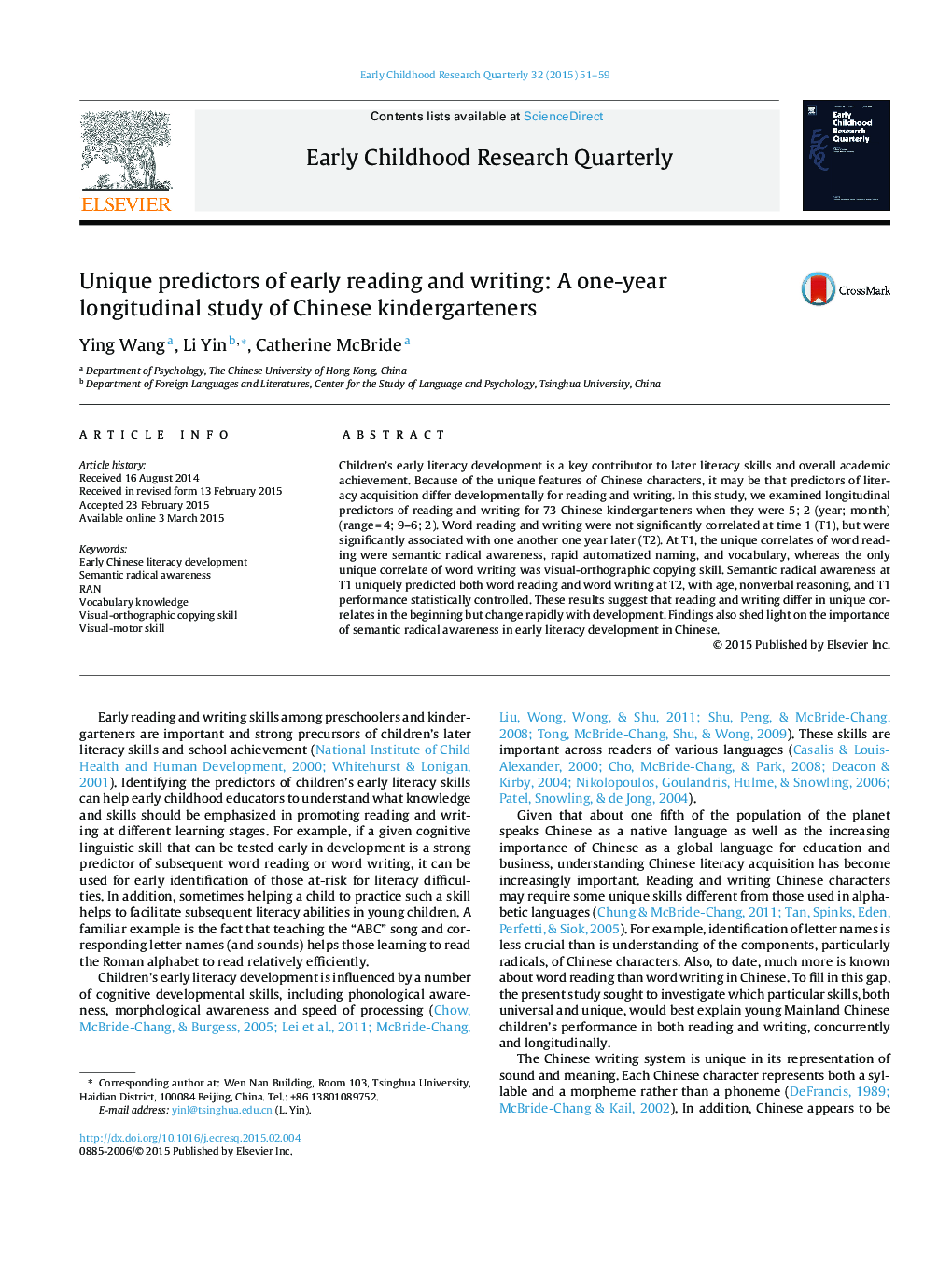| Article ID | Journal | Published Year | Pages | File Type |
|---|---|---|---|---|
| 353713 | Early Childhood Research Quarterly | 2015 | 9 Pages |
•Chinese word reading and word writing became significantly correlated a year later.•Semantic radical awareness explained both word reading and writing longitudinally.•The correlates of reading were semantic radical awareness, RAN, and vocabulary.•The only correlate for early writing was visual-orthographic copying skill.
Children's early literacy development is a key contributor to later literacy skills and overall academic achievement. Because of the unique features of Chinese characters, it may be that predictors of literacy acquisition differ developmentally for reading and writing. In this study, we examined longitudinal predictors of reading and writing for 73 Chinese kindergarteners when they were 5; 2 (year; month) (range = 4; 9–6; 2). Word reading and writing were not significantly correlated at time 1 (T1), but were significantly associated with one another one year later (T2). At T1, the unique correlates of word reading were semantic radical awareness, rapid automatized naming, and vocabulary, whereas the only unique correlate of word writing was visual-orthographic copying skill. Semantic radical awareness at T1 uniquely predicted both word reading and word writing at T2, with age, nonverbal reasoning, and T1 performance statistically controlled. These results suggest that reading and writing differ in unique correlates in the beginning but change rapidly with development. Findings also shed light on the importance of semantic radical awareness in early literacy development in Chinese.
